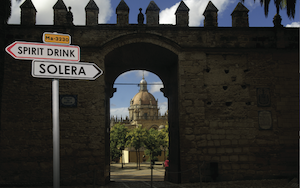.......................................................................
GET YOUR HEAD AROUND THIS: In 2008 30 million 70cl bottles of Brandy de Jerez’s entry-level Solera were sold in Spain; now that figure is 1m. If the regulators of scotch or American whiskey are worried about spirit drinks eating into their spirits sales, they ought to wander down Jerez way and try their predicament on for size.
Brandy de Jerez volumes have plummeted from 63m bottles in 2008 to under 20m last year but it is the entry-level Solera that has fallen hardest in Spain which is one-third of the global market.
Once a powerhouse style, Solera was 80% of Spanish brandy sales domestically. But the advent of spirit drinks, introduced by three big Brandy de Jerez brands — Veterano, Soberano and Centenario — but also many others, has changed the market beyond recognition. These products are similar in price to their Solera predecessors (largely under €10) but fall outside of the Brandy de Jerez DO. We can say what was entry-level Spanish brandy here is mostly not brandy. But what we cannot say, is what it is made out of.
Cristina Medina of Williams & Humbert says these spirit drinks came about because of an “increase in the cost of wine spirit from 2008 to 2012, due to removal of subsidies of wine distillation and short crops”. She says reduced abvs mean these brands are no longer Brandy de Jerez DO and do not conform to EU regulations on brandy so may have opted for “cheaper alcohols like grain or molasses”. “We believe that some brands are 100% non-grape alcohol,” she says.
Testing times
Drinks International doesn’t have the facility to lab-test these spirit drinks for alcohol type and without testimonies from their parent companies, we cannot say one way or the other. What we can say is there was a failed request by spirit drink producers to the regulator to create a new 51% Brandy de Jerez category, the other 49% presumably being grain or molasses spirit. By way of comparison, this would have created a sub-category akin to a mixto tequila.
In the case of Osborne’s Veterano and Gonzalez Byass’ Soberano, they first dropped from the EU-allowed 36% abv to 33% and now stand at 30%. This means less spirit, so less cost, and also brings tax incurrence down. Before launching, though, producers did carry consumer testing which suggested a favouring of lighter brandy styles.
Sales have dive-bombed of late so if consumers are looking for easy-drinking alternatives, why not oblige?Cesar Saldaña, managing director of Consejo Reguladores Brandy de Jerez, gives us his view: “We fully respect the free decisions of companies as far as they are in accordance with regulations; and this is the case with the changing of some former Solera brands falling now into the broader category of spirit drinks,” he says, but adds: “We obviously were not happy with these moves and have been alert in order to avoid any sort of consumer confusion about the nature of the products.”




